Key takeaways
- Understanding the differences between dynamic and condenser microphones is crucial for selecting the right mic for recording vocals.
- Room acoustics significantly affect sound quality; using soft furnishings can help minimize unwanted noise.
- Proper setup and configuration of equipment, including using quality cables and adjusting gain levels, are essential for achieving optimal sound.
- Vocal techniques like maintaining distance, using a pop filter, and experimenting with mic angles can enhance recording quality.

Understanding Shure Microphones Basics
When I first picked up a Shure microphone, what struck me was its sturdy build and the simple, yet effective design. Shure mics are known for capturing clear and natural vocals, which made me realize how much equipment quality truly impacts recording results. Have you ever wondered why some microphones produce that warm, professional sound?
One thing that stood out to me is how Shure’s dynamic and condenser models each serve a different purpose. Dynamic microphones, like the SM58, handle loud sound sources and noisy environments really well, while their condenser microphones are much more sensitive and excel at picking up subtle vocal nuances. Understanding these basics helped me choose the right mic for vocal recording and avoid unnecessary frustration.
Learning about Shure’s cardioid pickup pattern was a game changer. This pattern focuses on sound coming from the front, reducing unwanted background noise, which is crucial when recording in less-than-ideal spaces. Knowing this made me appreciate how much thought goes into microphone design—it’s not just about capturing sound, but capturing the right sound.
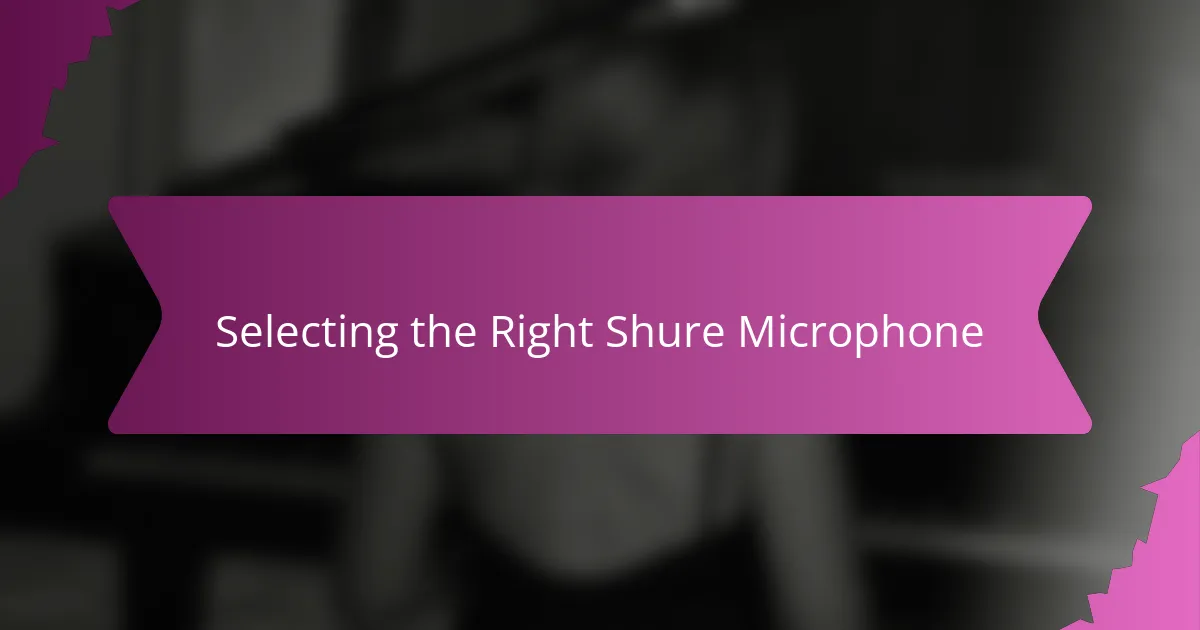
Selecting the Right Shure Microphone
Choosing the right Shure microphone felt like picking a trusted partner for my voice. For instance, the SM58 quickly became my go-to because it’s rugged and forgiving, especially when I recorded in noisy or untreated rooms. Have you ever struggled with a mic that picks up too much background fuzz? That’s where the SM58’s dynamic quality really shined for me.
On the other hand, when I wanted to capture every delicate detail and emotion in a softer vocal take, I switched to a Shure condenser model like the KSM32. The sensitivity and clarity were startling, making my recordings feel alive and intimate. It made me realize how different microphones can actually bring out completely different colors in the same voice.
What I learned from these experiences is that selecting the right Shure microphone isn’t just about specs on paper—it’s about matching the mic’s strengths to your vocal style and recording environment. I found that asking myself, “What sound am I chasing?” helped me make confident choices instead of getting overwhelmed by the options. Have you tried this mindset when picking your microphone? It really helped me focus on what mattered most.
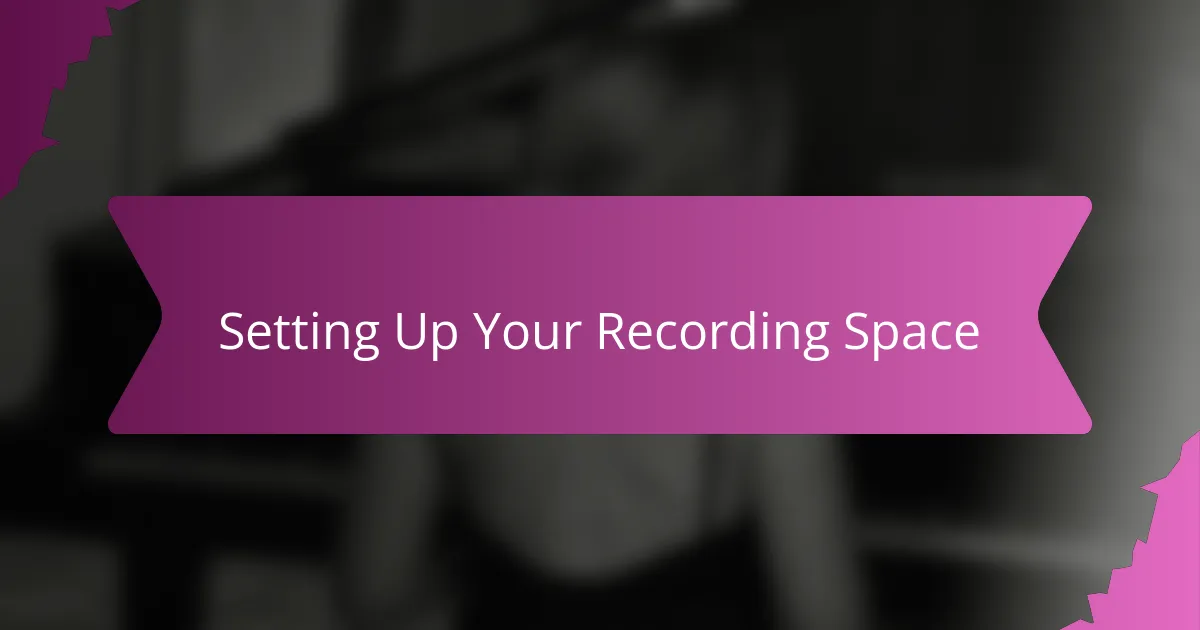
Setting Up Your Recording Space
Finding the right spot to set up my recording space was more challenging than I expected. I quickly realized that even with a great Shure mic, the room’s acoustics could make or break the sound. Have you ever noticed how a small, untreated room can make your vocals sound boxy or echoey? That was exactly my struggle at first.
To tackle this, I started using soft furnishings—like thick curtains and cushions—to absorb reflections. It was a simple tweak, but it dramatically cleaned up the background noise. I remember recording one session before this change, and my frustration was through the roof when the playback had all that unwanted reverb. After I made the room cozier, my vocal tracks suddenly felt more intimate and focused.
One thing I found useful was to position myself away from hard walls and windows, which tend to bounce sound in unpredictable ways. Have you tried moving your mic setup just a few feet and noticed a big difference? That subtle shift helped me hear the clarity I was after, letting the Shure mic capture my voice without competing noise. Setting up your space with intention truly changes the way your vocals come to life.
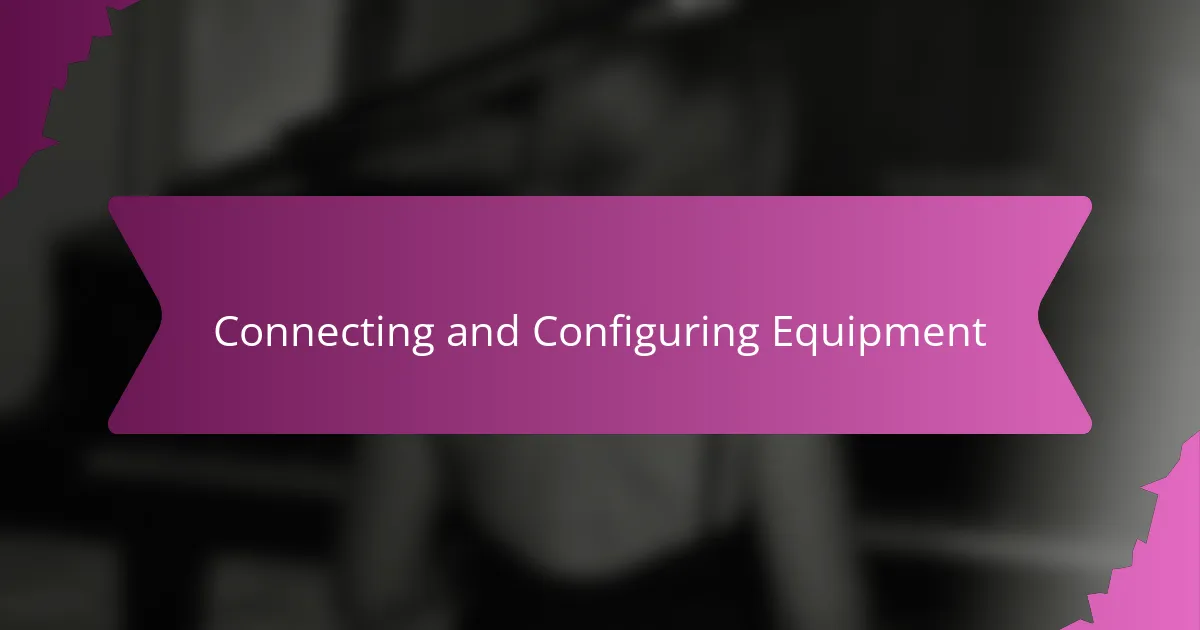
Connecting and Configuring Equipment
Plugging in my Shure microphone felt straightforward, but I quickly learned that every connection mattered. Using a quality XLR cable was non-negotiable—I remember once trying a cheap cable, and the hiss it introduced was impossible to ignore. Have you ever battled phantom noise and wondered if your gear was at fault? That’s why I always double-check my cables and connections before recording.
Configuring the interface settings came next, and it took a bit of trial and error. I found the right gain level by starting low and slowly increasing it until my voice sounded full but never distorted. Too often, I rushed this step and ended up with clipping that ruined takes; it taught me patience really pays off in dialing in the perfect input.
I also made sure to enable phantom power when using my Shure condenser mic—it’s a simple switch, but missing that step left me scratching my head at first, wondering why the mic was so quiet. Have you had moments like that? Now, it’s second nature to check the interface and mic setup systematically before hitting record.
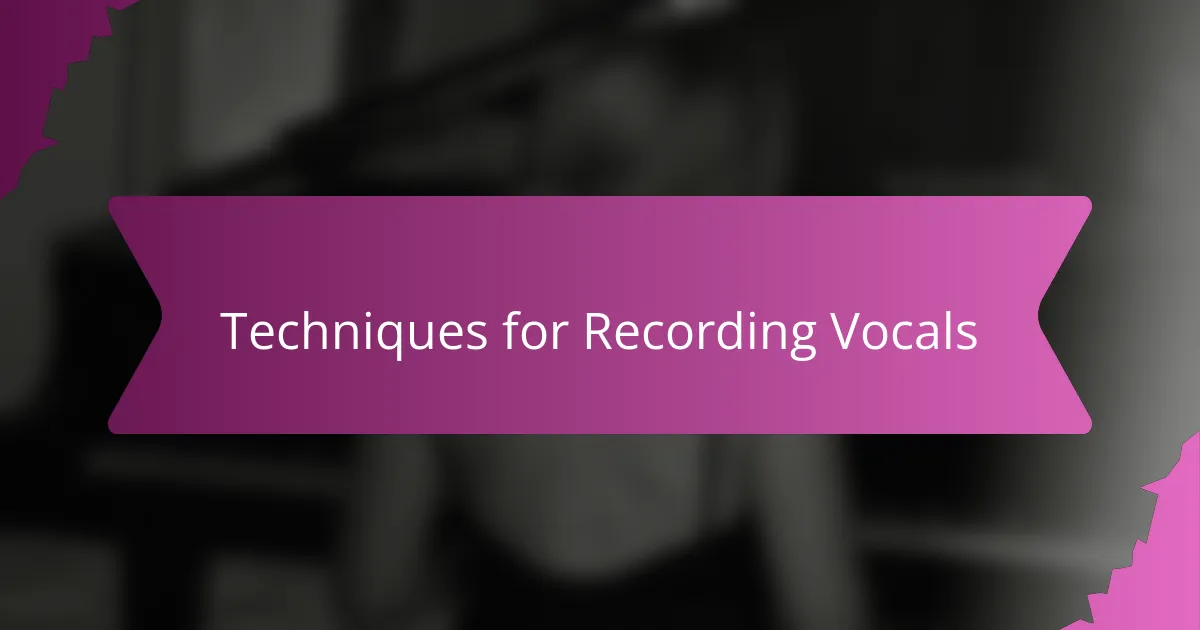
Techniques for Recording Vocals
Getting the vocals to sit just right in a mix often comes down to technique as much as gear. One trick I picked up early on was controlling my distance from the Shure mic—too close, and you get that boomy, bass-heavy sound; too far, and the voice loses intimacy. Have you ever shied away from the mic or leaned in closer without thinking? Adjusting this distance became my secret weapon for capturing the vibe I wanted.
Another technique I came to rely on was using a pop filter. Not only does it reduce those harsh “p” and “b” sounds that can pop into the recording, but it also gave me the confidence to get expressive without worrying about distorting the take. At first, I thought it was just a quirky accessory, but now I can’t imagine recording vocals without it in front of my Shure.
Lastly, experimenting with mic angle made a huge difference for me. Tilting the mic slightly off-axis helped tame sibilance and emphasized warmth, especially with the condenser models. It felt like discovering a new shade in my voice palette. Have you played around with angling your mic to shape the tone? That subtle adjustment can transform a good take into a truly captivating performance.
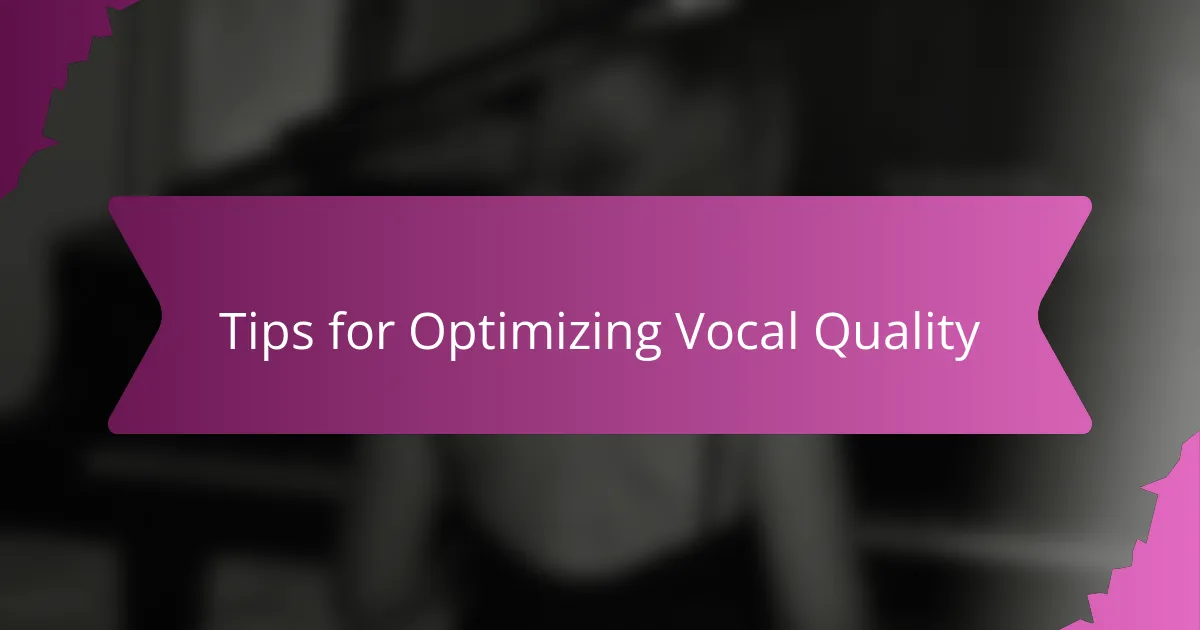
Tips for Optimizing Vocal Quality
When I wanted to get the most out of my Shure microphone, I realized that vocal quality starts even before hitting record. One simple tip that changed everything was warming up my voice properly; it’s amazing how those few minutes of humming and scales can make your vocals sound smoother and more controlled. Have you ever noticed your voice feels tight or scratchy at the start of a session? That’s your cue to warm up and treat your instrument with care.
Another key insight I gained was the power of consistent microphone technique. Keeping a steady distance and angle makes a huge difference—moving around too much during a take can cause uneven volume, which throws off mixing later. I used to think I could improvise on the mic position as I sang, but steady positioning quickly helped me capture a clean, polished vocal track that I was proud of.
Lastly, I can’t stress enough how important it is to monitor your recordings in real time through good headphones. Catching unwanted breaths or subtle noises early saved me countless re-takes. Have you ever found a tiny mouth click in the final mix and wished you’d caught it earlier? Monitoring closely lets you adjust on the fly, making your vocal tracks shine every time.